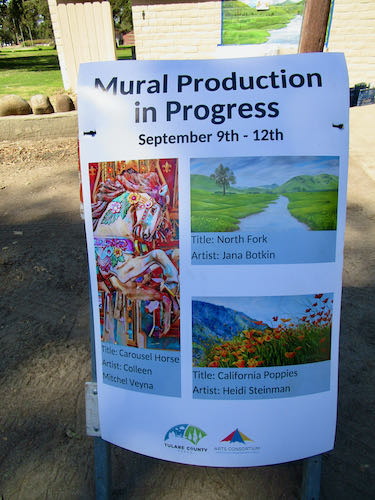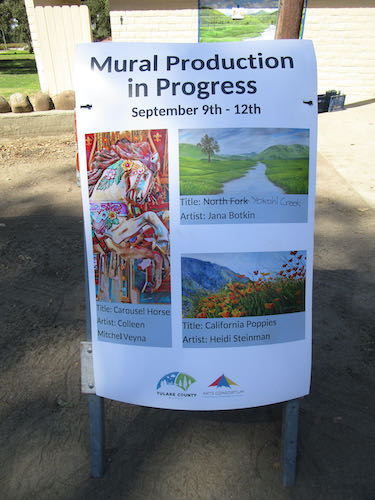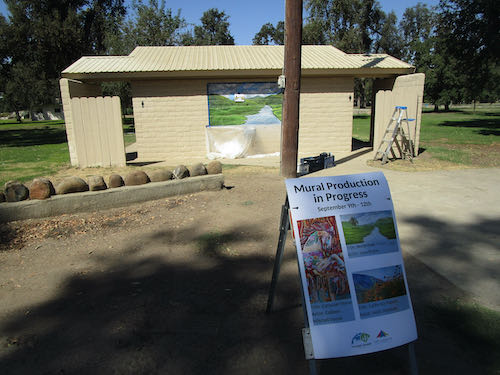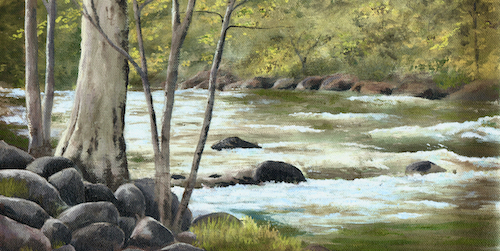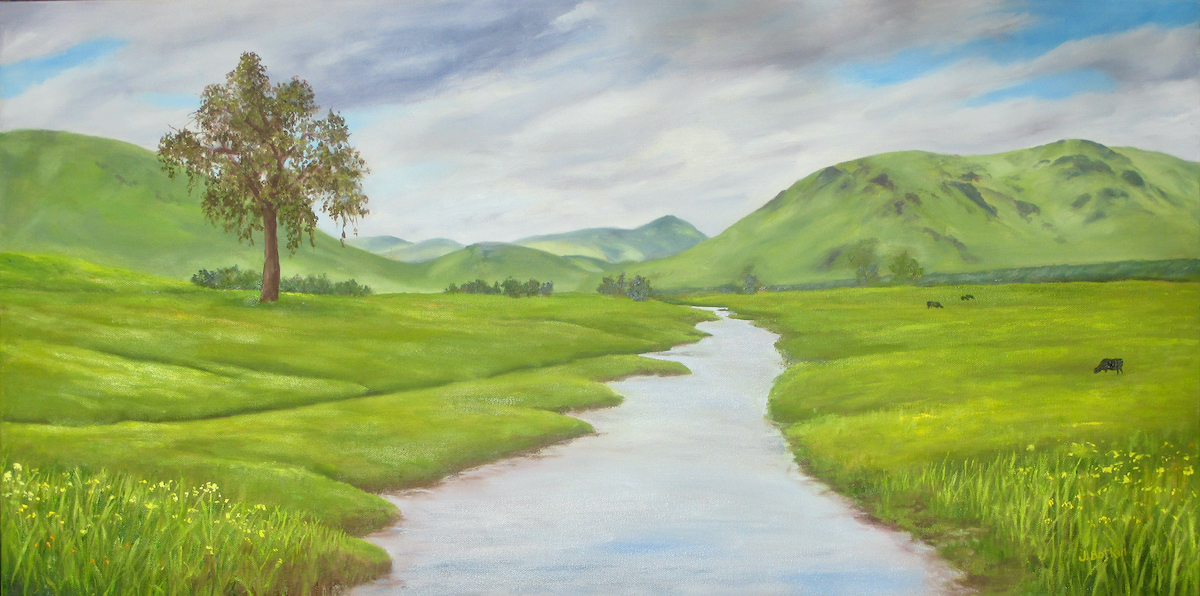2025 CALENDARS AVAILABLE HERE.
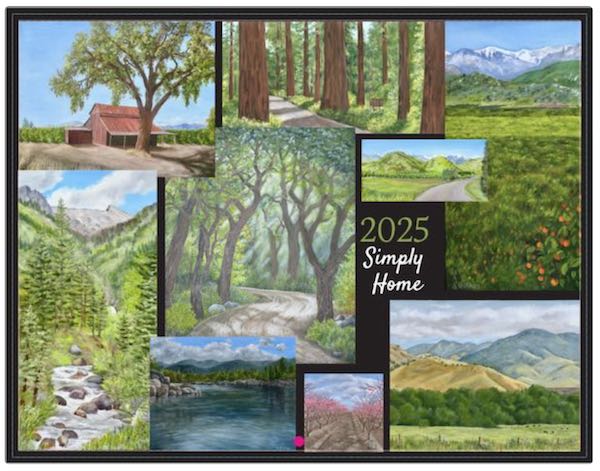
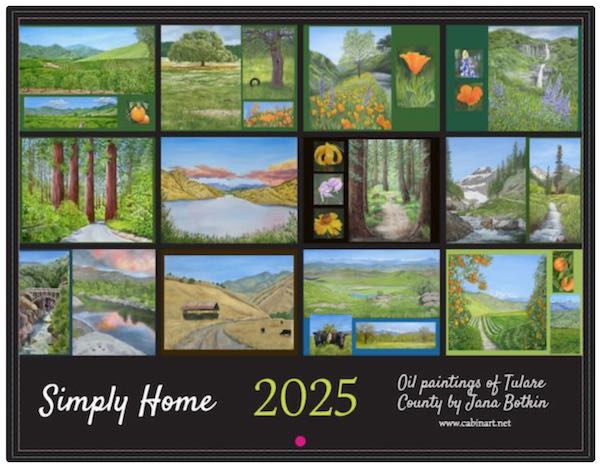
“Black Friday” kind of disgusts me. (I recognize the irony given the previous paragraph/ad). It overshadows Thanksgiving in the media, and it summarizes and epitomizes the commercialism and greed that taint Christmas. I have participated in Black Friday in the past by joining a group of artists for a boutique here in Three Rivers. It was fun for the visitors, most of whom were part-timers in town, staying at their second homes. I reached a point where the scuzzy state of the building where we held the boutique was no longer acceptable. (WHAT DO YOU MEAN THERE IS NO WATER??) We borrowed some other locations for a few years, and when they were no longer available, it was a relief to let that boutique fade away.
This year I spent half a day refreshing the mural on the water treatment plant in my neighborhood, an imminently more satisfying venture than heading down the hill into the fog and the crowds to spend time and money looking for things that no one in my life needs or wants. (Not judging you—just stating the facts of my simple life.)
Yellow is the quickest fading color, so many of the greens have turned blue in the past 5 years. Some of those greens may have been mixed using a yellow that lost its high-lightfast rating (which I learned about when I tried to reorder that yellow.)
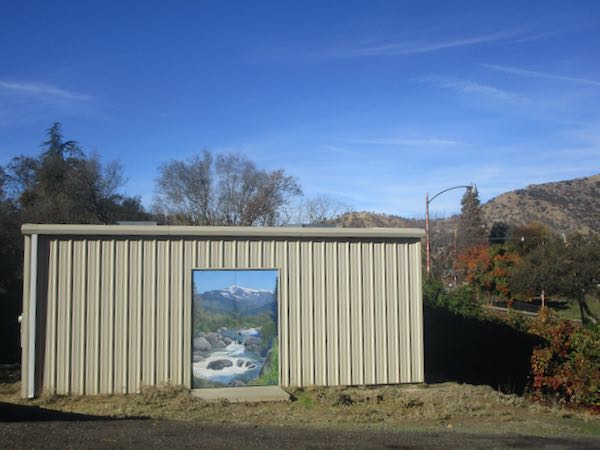
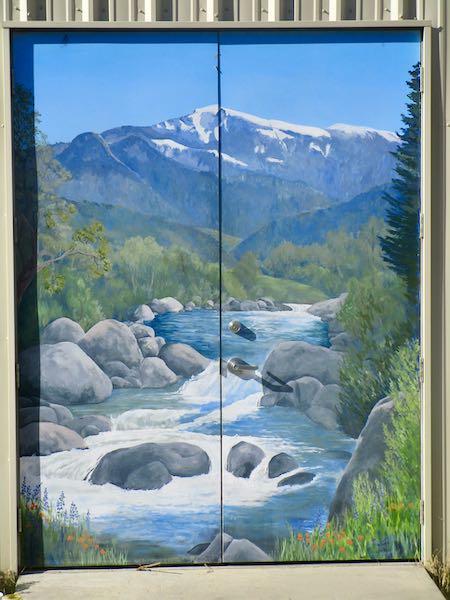
My before and after photos were terrible. It is almost impossible for me to take comparison photos when in sunlight because the camera screen is too invisible to be able to see and take the same angles. And even this last photo of the finished mural isn’t a good comparison because the light has changed.
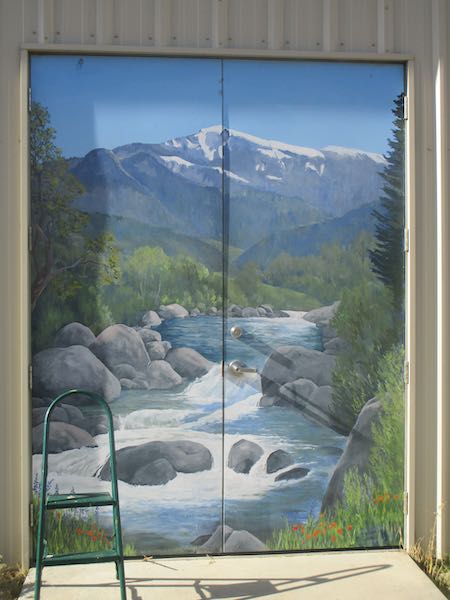
You’ll have to trust me that it has improved.
Have a look at Alta Peak. When I went out into the road to view the mural from a distance, this is what I saw behind me.
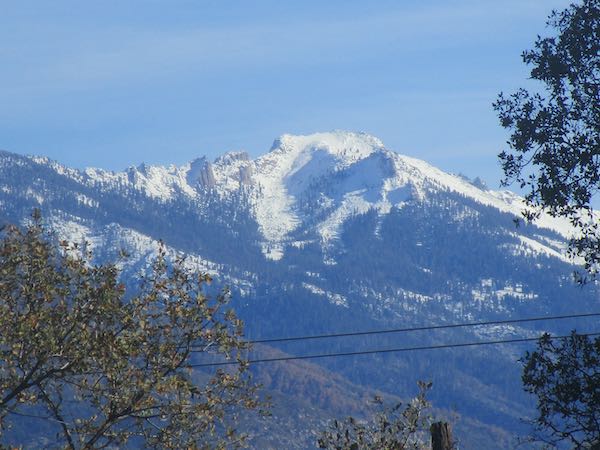
In spite of my lack of helpful before and after photos, this picture of Alta Peak lets you know that the mountain in the mural is accurate.
It was a much more satisfying way to spend the day after Thanksgiving.
WAIT! I WENT BACK THE NEXT DAY AT THE SAME TIME AND TOOK THIS PHOTO FOR YOU!
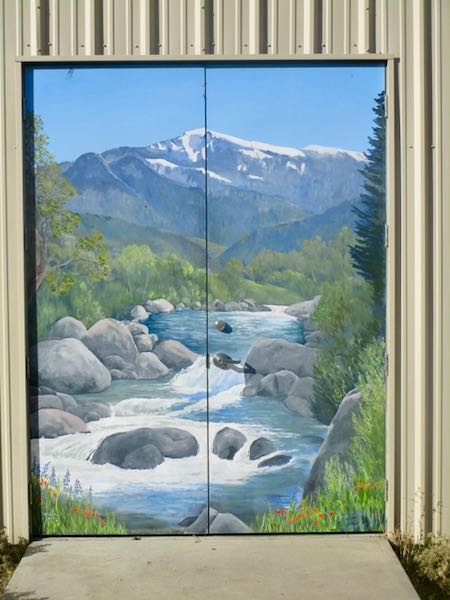
Now, let’s look at before and after, side-by-side (11/29/24 on the left, 11/30/24 on the right). The differences are subtle, but I like it better now.
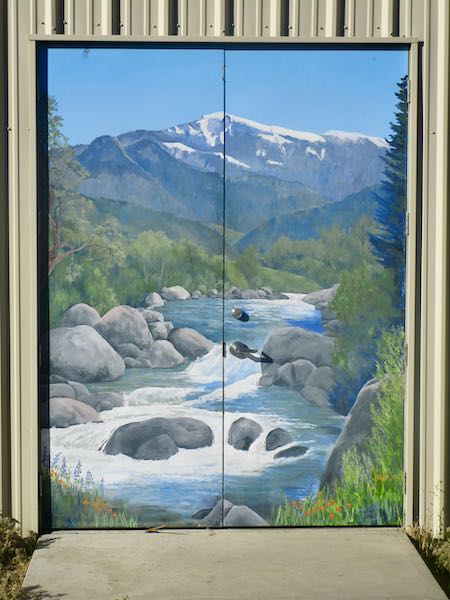

SIMPLY HOME
*The show hangs until December 29 at CACHE in Exeter. Their hours are Friday 1:30-4, Saturday 10-4, Sunday noon-4. It includes about 50 paintings, 3 original pencil drawings, calendars, cards, coloring books, The Cabins of Wilsonia books, and a few pencil reproduction prints.
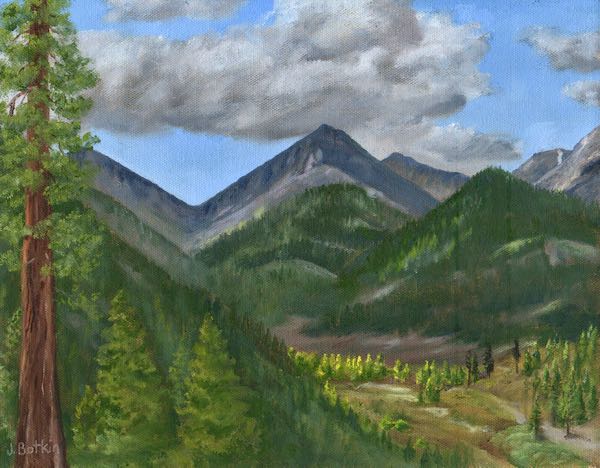
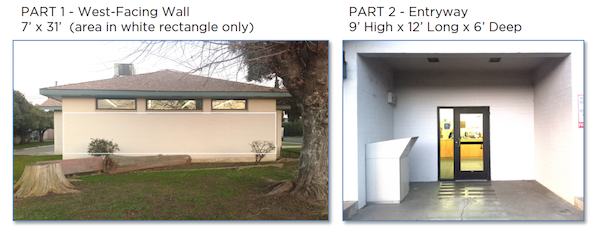
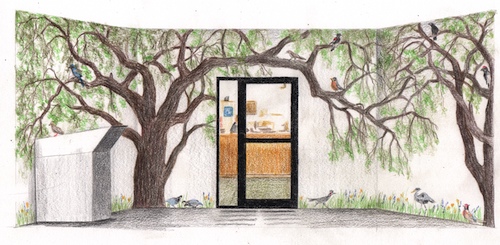
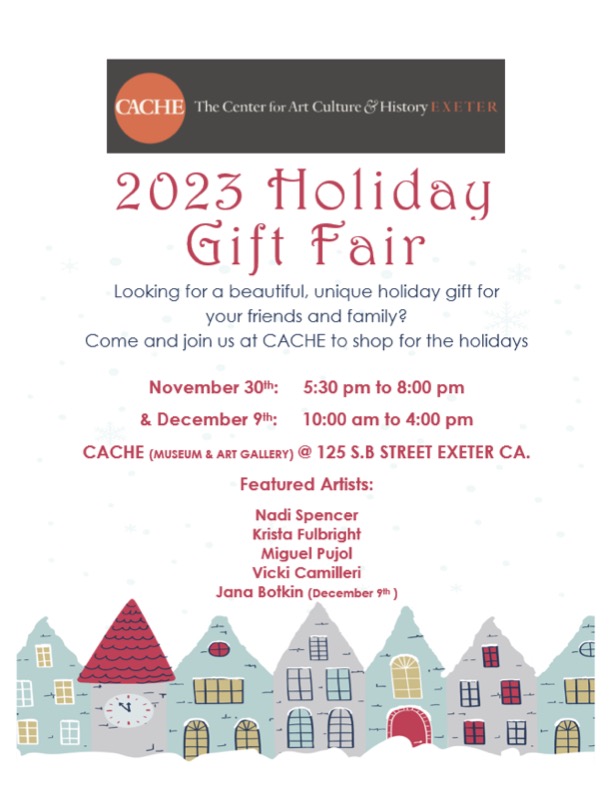

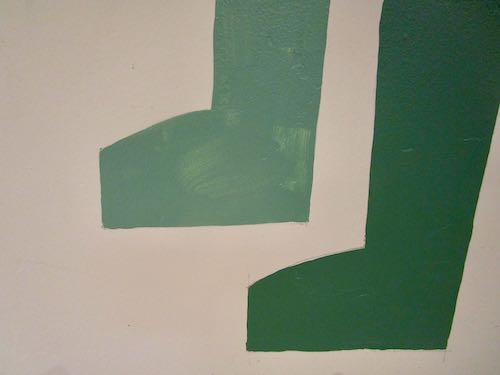
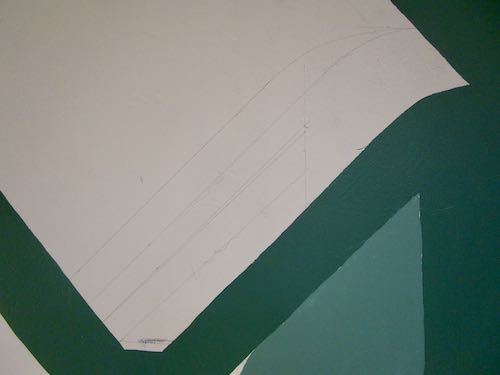
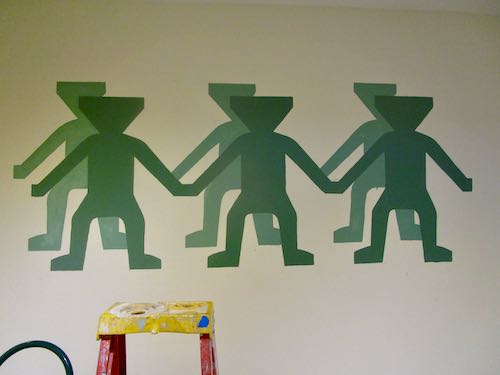
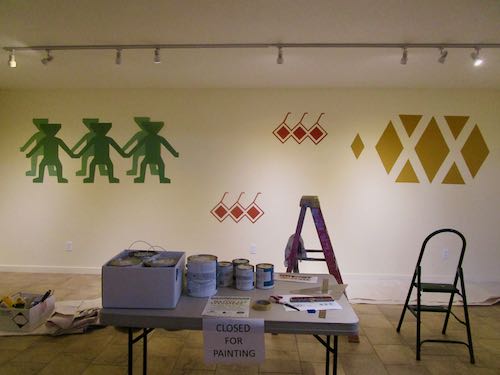
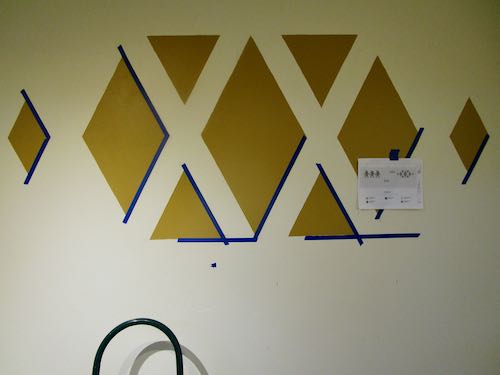
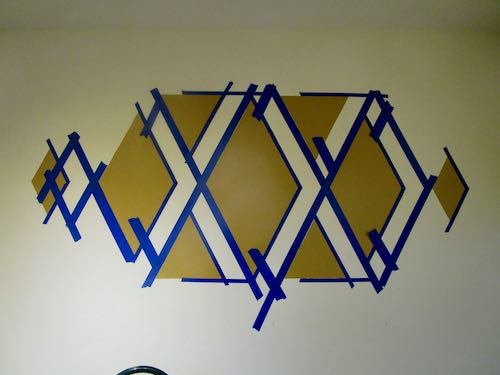
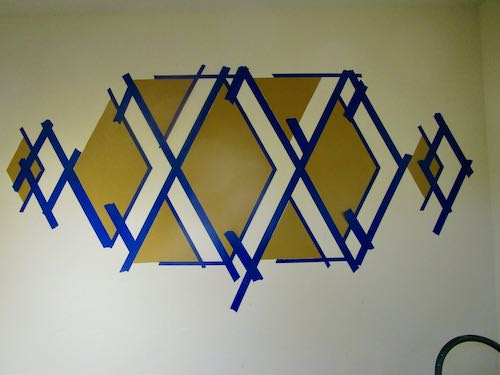
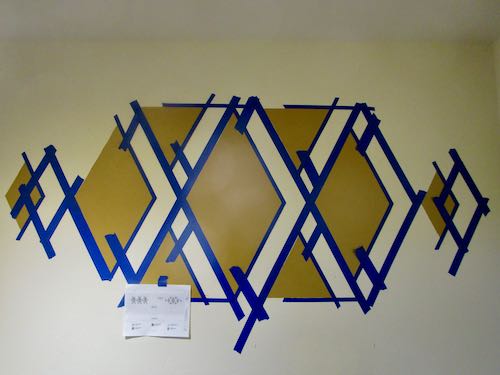
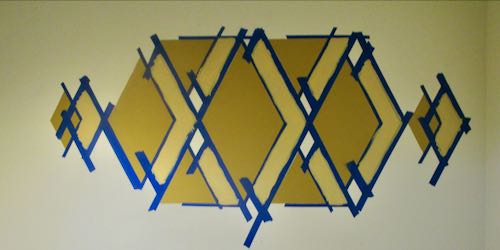
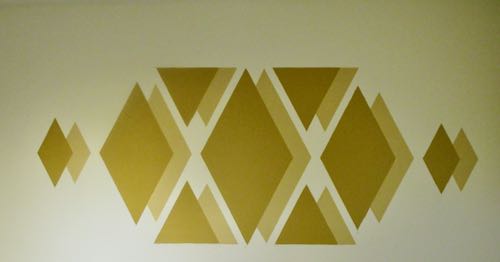
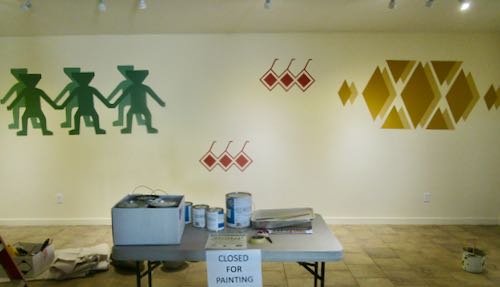
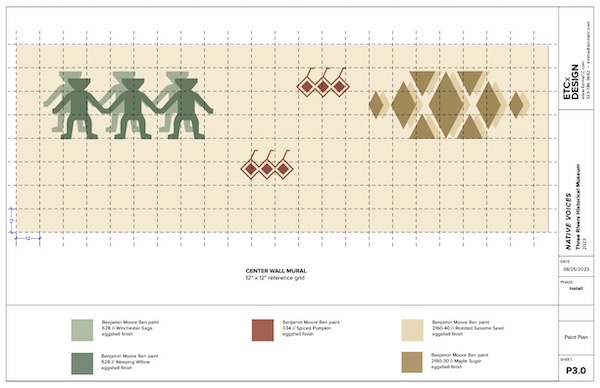
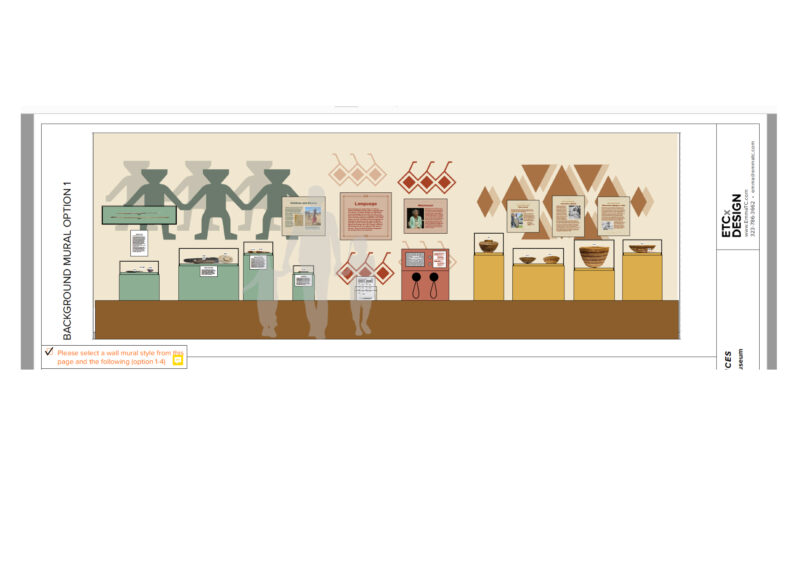
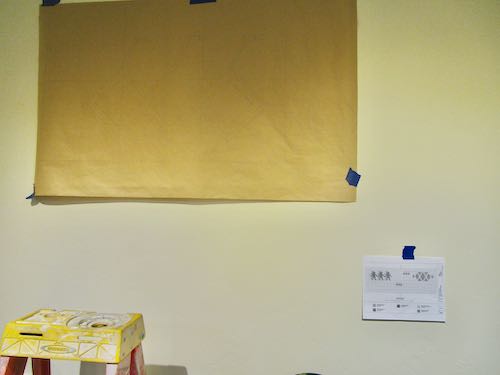
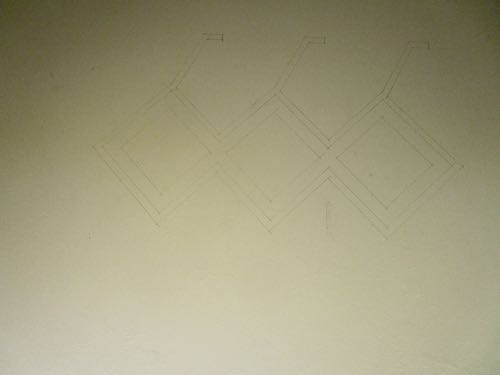
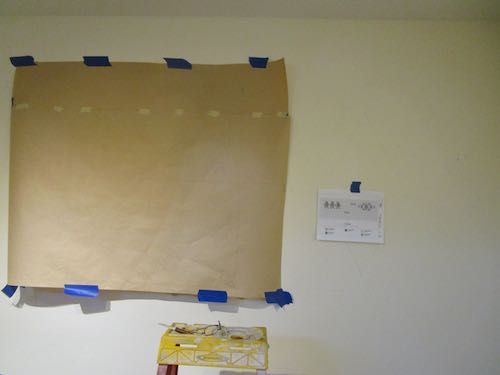
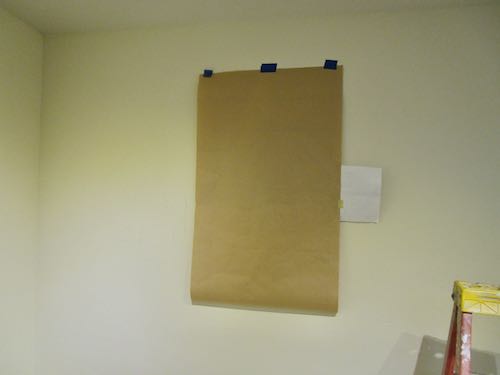
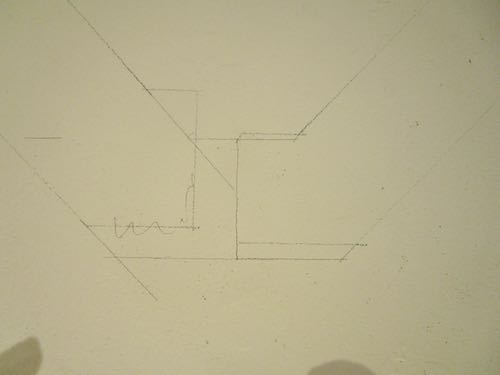
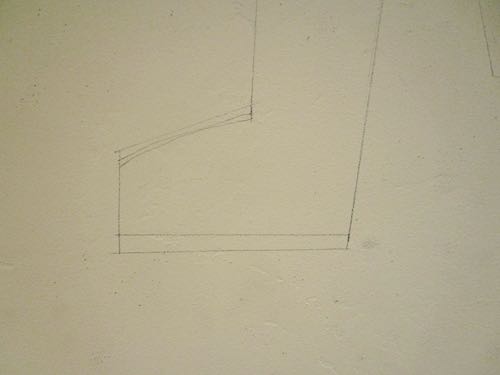
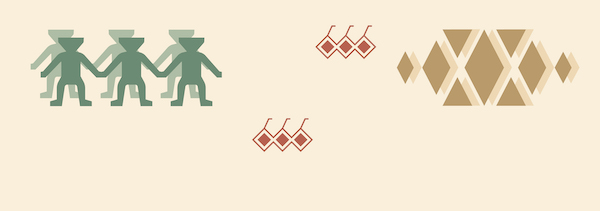
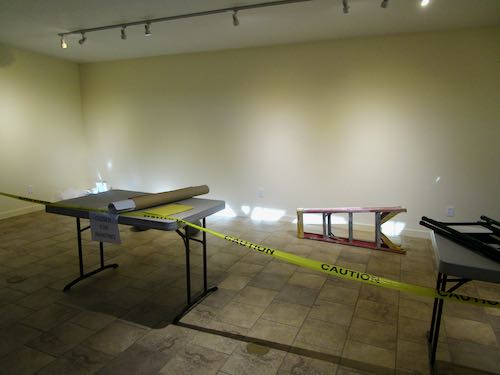
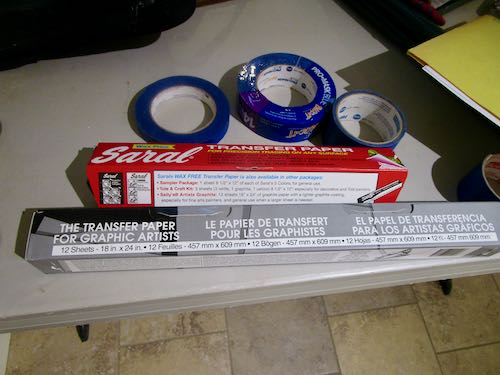
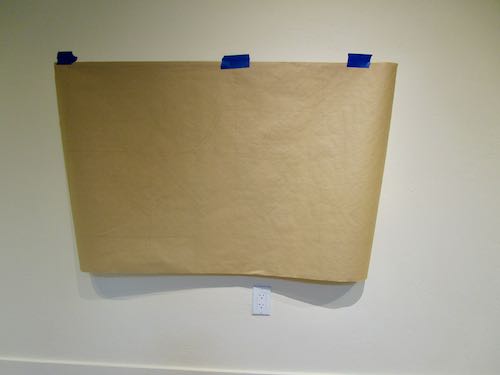
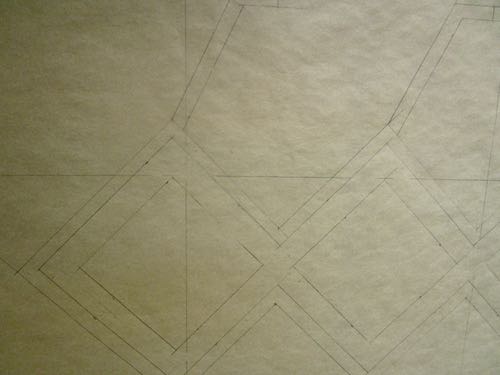
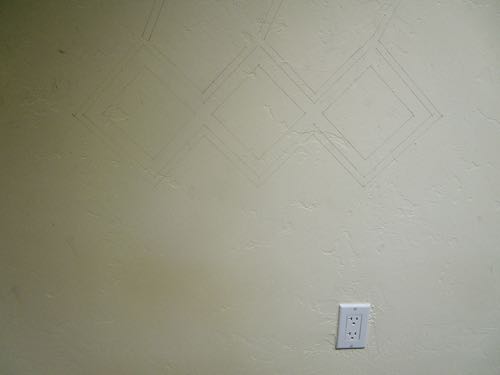
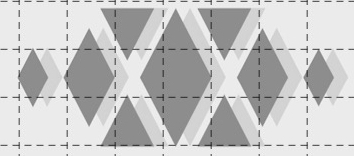

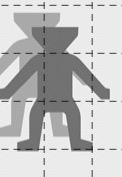
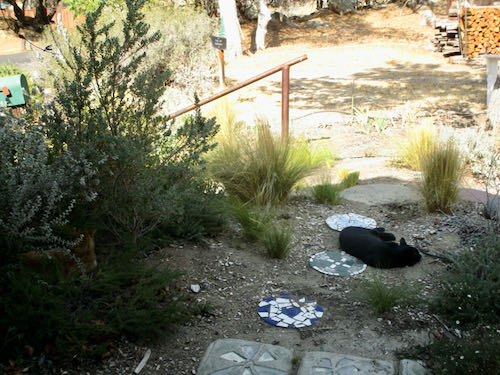
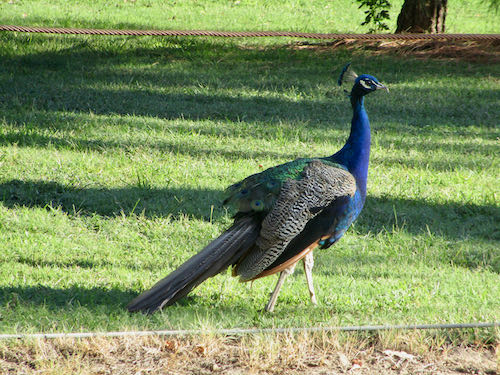
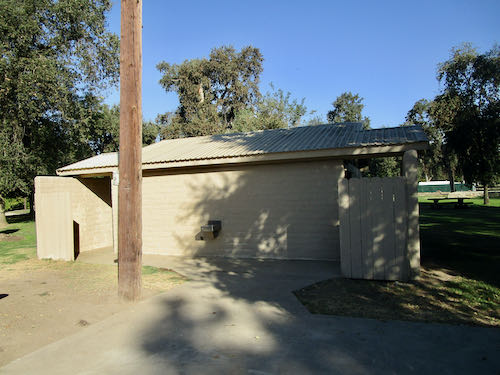
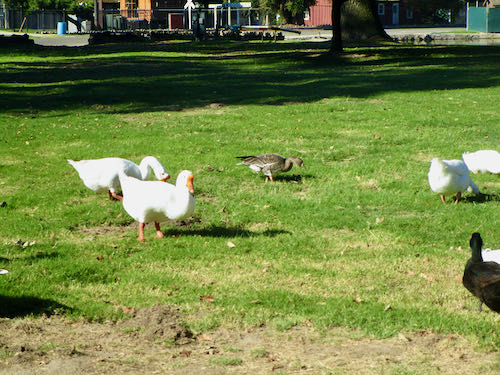
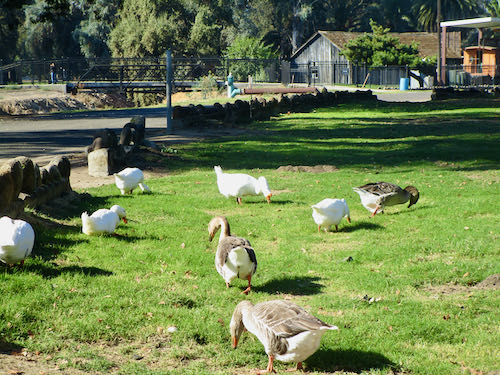 9 a.m. and it was already hot in the sun.
9 a.m. and it was already hot in the sun.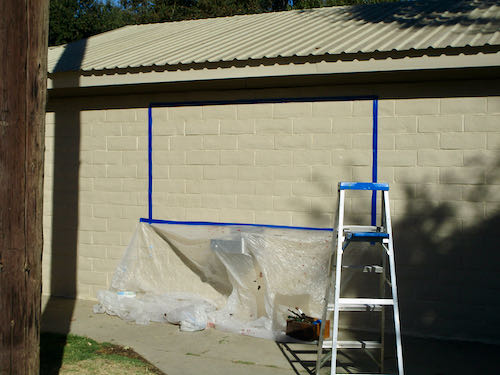 HEY! BUG OFF!
HEY! BUG OFF!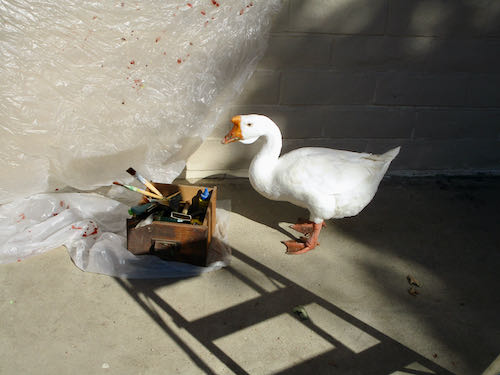
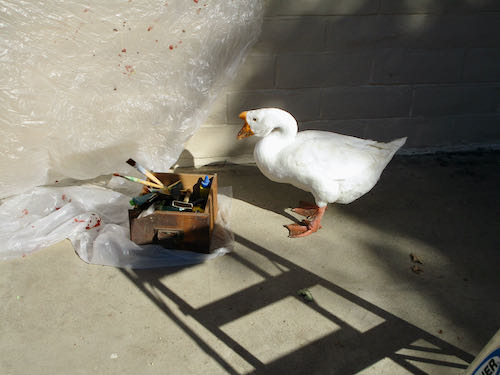 Apparently he had a conference to attend, so eventually he waddled away.
Apparently he had a conference to attend, so eventually he waddled away. 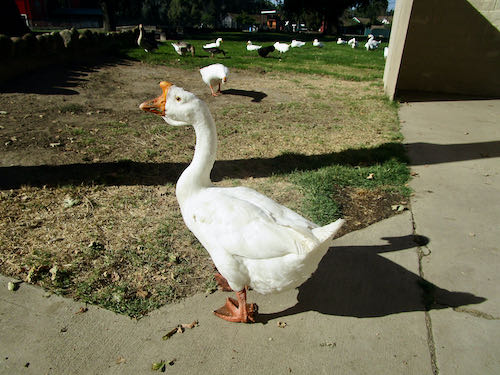
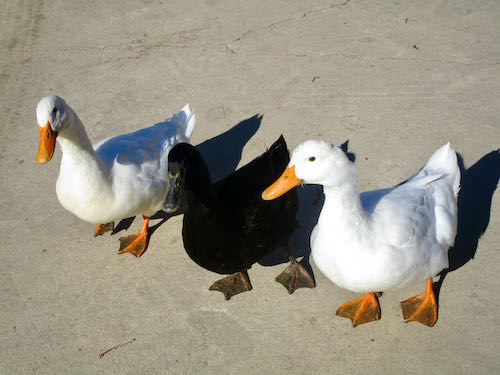
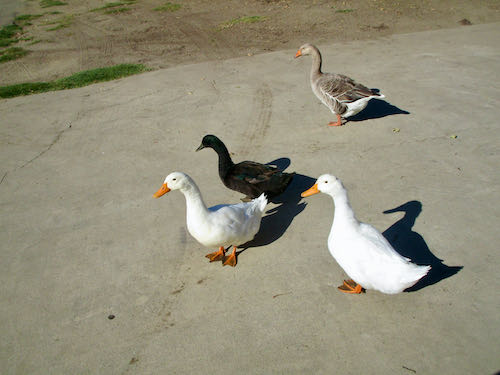
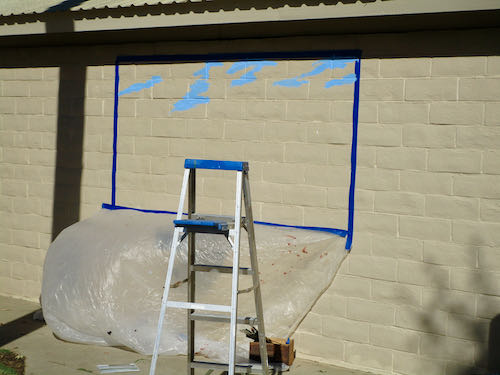
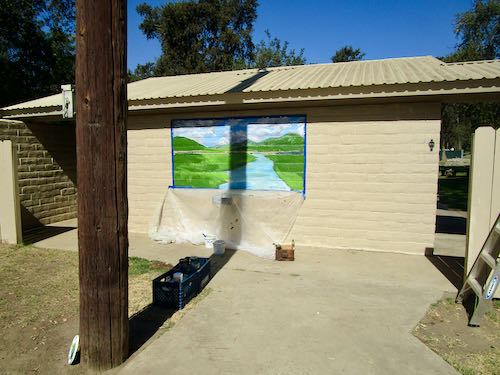
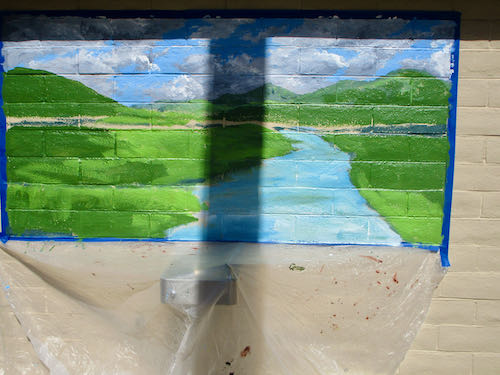
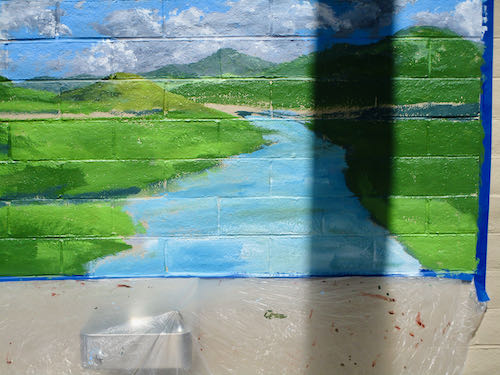
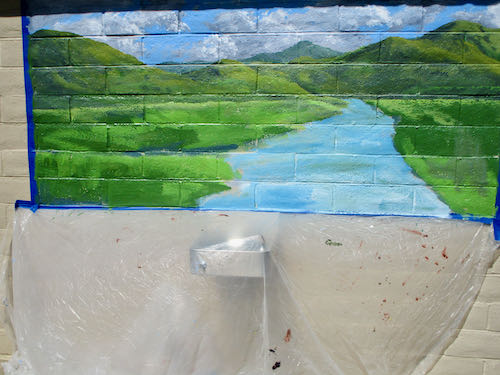
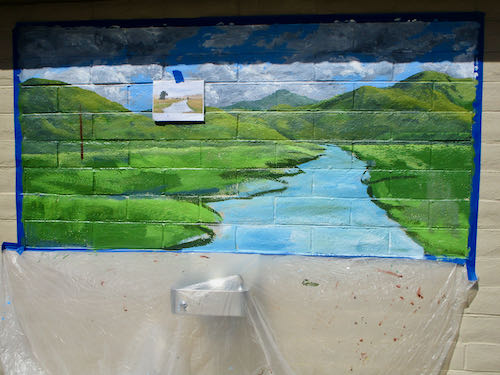
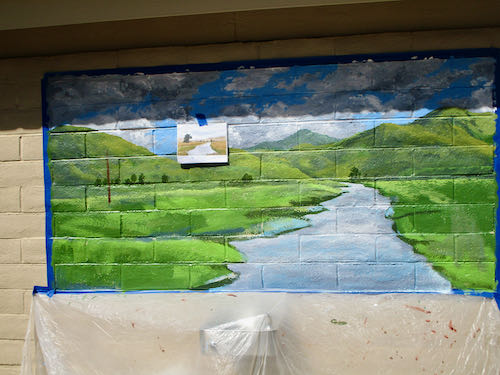 The maintenance men eventually brought this sign.
The maintenance men eventually brought this sign.